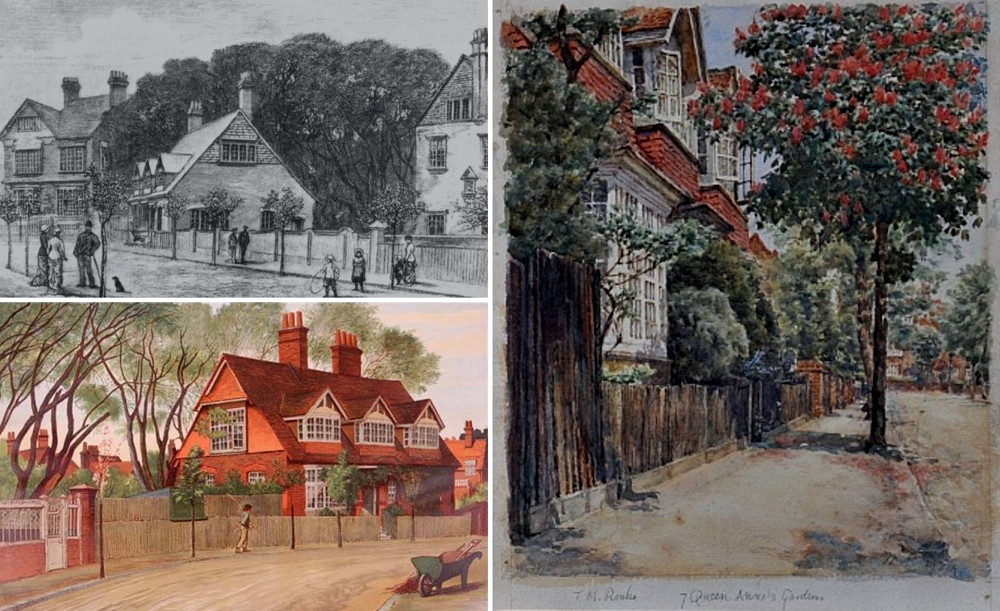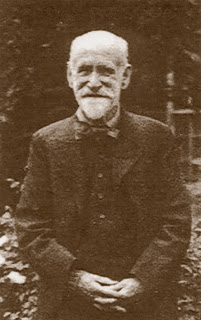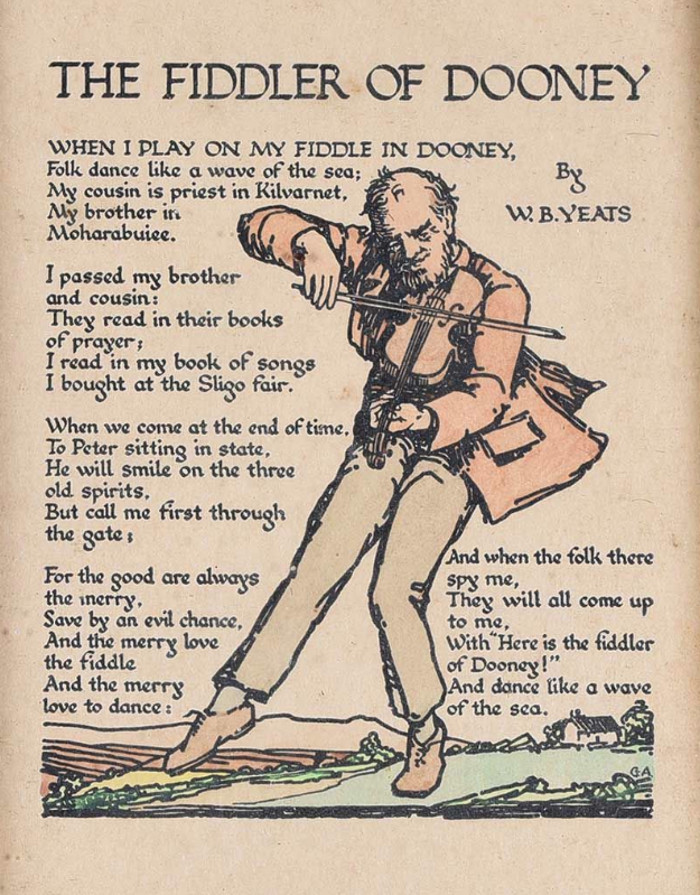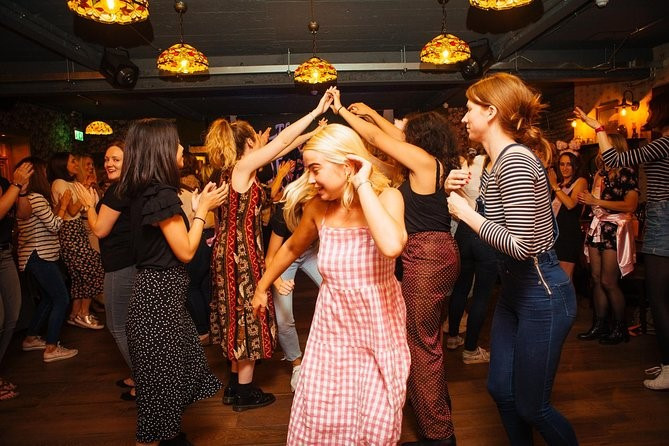No.7 Queen Anne’s Gardens: Thomas Matthews Rooke
Location 5


Painter Thomas Matthews Rooke, at Number 7, Queen Anne’s Gardens, was a friend of Pre-Raphaelite painter Edward Burne-Jones, and worked with both William Morris and John Ruskin, two artists with significant ideas on the role of art in society.
Rooke is remembered in Yeats’s autobiographies as the painter of a tabarded trumpeter on the original sign on Bedford Park’s Tabard inn. And his home was a source of fascination to Yeats, part of the fairy-tale aspect of Bedford Park: Yeats writes:
The dining-room table, where Sinbad the sailor might have sat, was painted peacock-blue, and the woodwork was all peacock-blue and upstairs there was a window niche so big and high up, there was a flight of steps to go up and down by!
Interestingly, despite their long summers with their mother’s parents in Sligo, the young Yeatses learned their country dancing, not from fairs in the West of Ireland or from watching dancers meet at a country crossroads, but from Rooke’s two sisters in this very house.
Dance would play an important part in Yeats’s poetry and drama: one of his poetry collections was entitled Michael Robartes and the Dancer: And his poem, titled “Among School Children”, ends with the question “How can we tell the dancer from the dance?”
One of his best-loved poems, “The Fiddler of Dooney”, answers some of the questions about the role of art by imagining the satisfaction an artist achieves from making people happy. In this case a fiddle-player, knowing how people love to dance, hopes that when Saint Peter makes his judgements at the Gates of Heaven, a musician might be just as important as, say, his brother and cousin, both priests, who look after the spiritual side of life.
There’s a great image, in the poem, of folk dancing “like a wave of the sea” which suggests that the young Yeats had watched people dance a very well-known Irish dance called The Waves of Tory where two lines of dancers flow and ebb through each other, and then dip and dive like a boat buffeting the waves off Tory Island, to the west of Donegal. The sort of dance that can fill the whole of a long main street in a town like Sligo on Fair Day, when you can’t tell the dancer from the dance!

